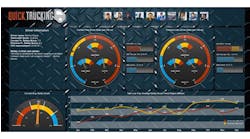Supply chain visibility for many manufacturers has gotten worse, according to KPMG’s latest Global Manufacturing Outlook titled “Performance in the Crosshairs.” Forty percent of respondents to the researchers’ survey admitted they lack visibility across their extended supply chain, with 33 percent saying it was due to either inadequate IT systems or a lack of skills. The report suggests that many of the gains in supply chain visibility have resulted from stronger relationships between manufacturers and their top-tier suppliers and the willingness to share more real-time.
That 40 percent is twice the number reporting poor visibility as the number reporting the same in 2013.
“While the value associated with increased visibility is certainly alluring to manufacturers, many have stalled simply because they lack either the skills or the capacity,” noted Brian Higgins, partner, Supply Chain & Operations, KPMG in the US. “Given that most organizations have traditionally been very focused on optimizing within their walls rather than outside of them, achieving the necessary change in skills and capacity will be a lingering problem.”
Where visibility is reported to have improved, it has been dramatic, however. Around 20 percent of respondents claim to have complete visibility (up from just 9 percent in 2013). Nevertheless, Higgins offers some caveats.
“The directional trend illustrated by this data is certainly good, but our experience suggests that – while a growing number of companies may claim to have access to the right supply and capability data – few have the right timeliness, precision or accuracy of that data to provide real visibility,” he noted. “Regardless, when compared to the levels of visibility seen in other adjacent sectors – around three-quarters of high-tech manufacturers could likely claim complete visibility – there is still much room for improvement among consumer and industrial manufacturers.”
Given that most visibility programs in the past were heavily geared towards reducing supply chain risk, the researchers are encouraged that resilience has greatly improved over the past year. They report that at the very least these companies can assess the impact of an unexpected event on their supply chain operations in less than a month; 63 percent of respondents say it would take them less than a week, up from 45 percent last year.
Visibility enabling technology is a growing investment for many companies surveyed. More than half of respondents now say that they use global demand planning and global capacity planning technologies in their supply chain enterprise-wide. Almost two-thirds say that they use technology enterprise-wide to create stronger linkages between product R&D and development.
This inspired yet another caveat from Higgins: “Manufacturers must remember that these technologies are more of a foundation for improving visibility and integration. The magic really happens when they are coupled with the right visibility or collaboration technologies to drive serious value from the data the other systems are capturing.”





